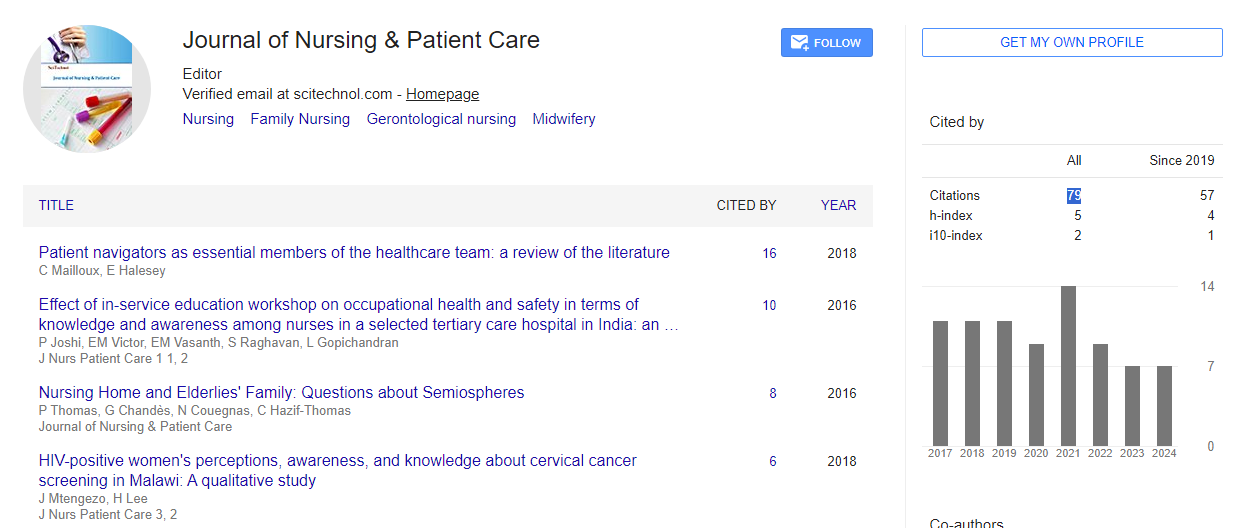Patient participation and engagement in care process by implementing the patient safety caravan tool at Manawan hospital
Sharmeen Ziarukh Jah*, Muhammad Faheem Anwar and Aamina Sabir
Manawan Hospital, Pakistan
: J Nurs Patient Care
Abstract
Patient Safety is a discipline in healthcare which seeks to reduce the risks, errors and prevent harm that can occur to patients during the delivery of health care. It is considered to be under the domain of quality healthcare as viewed by many. Institute of Medicine (IOM) states that patient safety cannot be separated from healthcare quality delivery. The Institute of Medicine (IOM) focuses on the importance of patient safety in healthcare. In the United States on an annual basis 1.5 million ADE’s take place. These ADE’s are costly but the most common cause of harm, which is preventable. These Medical errors contribute to about 98,000 deaths annually in the United States. The data shares that in the United States hospitals, urinary tract infections (32%), surgical site infections (33%), pneumonia (15%) and bloodstream infections (14%) are some of the commonest HAI’s. They have also observed that between 2 and 5 falls per 1,000 patient-days take place in United States hospitals, categorizing falls as the biggest reason for ADE’s in hospitals. In addition, approximately 40,000-80,000 deaths occur yearly due to diagnostic errors. Similarly, surgical errors account for 40%-50% of adverse events in hospital in the United States. The most important aspect of patient safety is the lack of involvement of patient in their own care. As early as 1977 the World Health Organization has advocated that patients should be involved in their healthcare decisions. Importance of Research: Previously studies have shown that due to patient participation and engagement, better health outcomes can be attained which could be self-management, quality of life and cost effectiveness. Patient’s involvement in their healthcare decisions can prove to be a bridge between the healthcare system and patients experience as patients have more expertise on their own body and symptoms. This will eventually lead to, which improve better and safe care. The traditional medical model states that the physician has the primary role in decision-making but patient empowerment has shifted the ideology from physician centered care to patient centered care. Therefore, once the patient has all the skills, knowledge and attitude to influence and improve their quality of life, they are known as an empowered patient. This empowerment allows patients to shed their passive role and play an active part in the decision-making process about their health and quality of life. Thus, a patient should be treated as an equal in healthcare in terms of rights and responsibilities. This self–care would also help to ease the economic constraints on the healthcare system. It is in the interest of patients and their families to take an interest in and to be responsible for their own safety. It is also the responsibility of healthcare providers and policymakers to keep the patients/families involved in their medical care. Keywords: Patient safety, Culture, Patient engagement, Adverse drug reaction, Hospital acquired infection, Patient safety friendly hospital framework.
Biography
Sharmeen Ziarukh has completed her post-graduation MCPS and MRCGP (INT) in Family Medicine. She is working as Specialist in the Family Medicine department at Indus hospital, Manawan, Lahore since the past five years. She has additional responsibilities of Patient safety coordinator at Manawan hospital. She is assisting her patient safety team to achieve level 3 accreditation for WHO. She is also Chair of Clinical Ethics committee and CME Coordinator and is currently working on researches related to safe patient care.
 Spanish
Spanish  Chinese
Chinese  Russian
Russian  German
German  French
French  Japanese
Japanese  Portuguese
Portuguese  Hindi
Hindi 